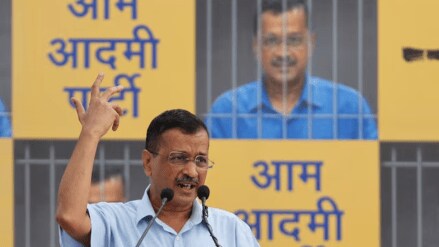This week’s announcement of a new BJP Delhi Chief Minister after 27 years is the trending news, but to write the obituary of former CM Arvind Kejriwal would be a mistake. The Congress and the BJP’s assumption that the AAP sprouted overnight like crabgrass and will wilt as quickly could turn out to be wishful thinking. Kejriwal, after all, changed the dynamics of the Capital’s politics by converting the traditionally bi-polar political space into a triangular contest. And his ambition to replicate his Delhi experiment elsewhere should not be dismissed outright. After all, he struck gold in Punjab and, just this week, AAP won 30 municipal seats in Gujarat. AAP’s appeal, offering an alternative platform to those looking for a change from traditional parties and vested interests, has its takers.
In fact, AAP’s Delhi poll performance is impressive, considering Kejriwal’s anti-incumbency factor and other drawbacks. While the BJP was well ahead with 48 seats, compared to AAP’s 22 seats, the difference in vote percentage was a mere 2.06 per cent. In 14 constituencies, the slender margins of the BJP’s victory was less than the votes polled by the Congress candidates. A CSDS survey indicated that AAP retained its hold among the poorest strata of society and lower income women voters. The party focused on wooing the marginalised voters with freebies, rather than playing the usual caste card. Kejriwal, for instance, did not benefit from being part of the trader community. Today, the AAP is one of only six recognised national parties, a status symbol that has eluded even Mamata Banerjee’s TMC and one that was forfeited by the 100-year-old CPI some years back. Rahul Gandhi’s determination to defeat the AAP in the Delhi Assembly polls, even if it ensured victory for the BJP and struck a blow at the INDIA bloc’s unity, is understandable.
Rapid rise tale
The meteoric rise of Kejriwal in Delhi is unprecedented in Indian politics and a source of inspiration for aspiring politicians, including pollster Prashant Kishor, who has established a new party in Bihar. Kejriwal, an unknown NGO activist, succeeded in forming a new party and getting elected as CM in just 13 months, vanquishing popular three-time CM Sheila Dikshit. There have been other overnight political success stories, but in all such cases, the shooting stars were either inheritors of their family political legacy or were well-known as movie stars.
An analysis of Kejriwal’s career route indicates an instinctive street-smart shrewdness in sensing an opportunity and seizing the moment. In 2011, the time was ripe because of major corruption scandals in the UPA government. Public outrage, cutting across the social divide, was heightened by the shocking Nirbhaya rape case in 2012. The RSS, working behind the scenes, propped up Ramdev and signaled to its cadres to swell the crowds at Jantar Mantar. But Anna Hazare eventually emerged as the symbolic head of the anti-corruption movement, with other respected names, including the father-son duo, Shanti and Prashant Bhushan, academic Yogendra Yadav and Kejriwal, a former Income Tax officer, a part of its brain trust.
Somewhere along the way, a disillusioned Anna withdrew to Maharashtra and, over time, so did most of the other activists. Kejriwal became the sole face of the movement. His detractors claim that Kejriwal has a history of using people and then booting them out. However, an interview by HW News with veteran Marathi journalist Raju Parulekar suggests a more calculated move. Parulekar, who initially wrote Hazare’s blogs, believes that Kejriwal invited Anna, a respected but largely unknown figure outside Maharashtra, to join the cause believing a Gandhian ascetic figure as a front would fire up the public imagination. Whatever the truth, most of the initial founders of the India Against Corruption movement fell out with each other and Kejriwal took complete control of the new party, AAP.
Ironically, in his first brief stint as CM, the Congress supported him — only to keep the BJP out of power and, consequentially, marginalised itself in Delhi politics. Incidentally, the Congress had earlier made the same mistake in Uttar Pradesh, backing Mayawati, who later swallowed the Congress’s SC’s vote bank.
Uncommon common man
Kejriwal carefully cultivated the image of a common man, sporting a long hand-knitted muffler to keep away his hacking cough, and chose the humble broom as his party symbol. Over the years, his hubris got the better of him. The cough and the muffler disappeared, so did his claim of simple living. One of Kejriwal’s big mistakes was the failure to build a cadre and his suspicion of all potential rivals. Far from rewarding loyalists, he handed out Rajya Sabha nominations arbitrarily to wealthy uncommitted individuals. The BJP electoral machine is now out to demolish Kejriwal’s image with the help of the state machinery and constant media reminders on “Sheesh Mahal” and the liquor scam scandals. Only time will tell whether David can rise once more to slay the Goliaths.
